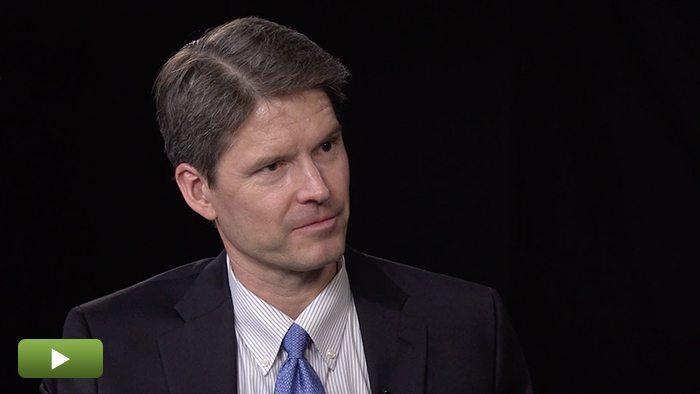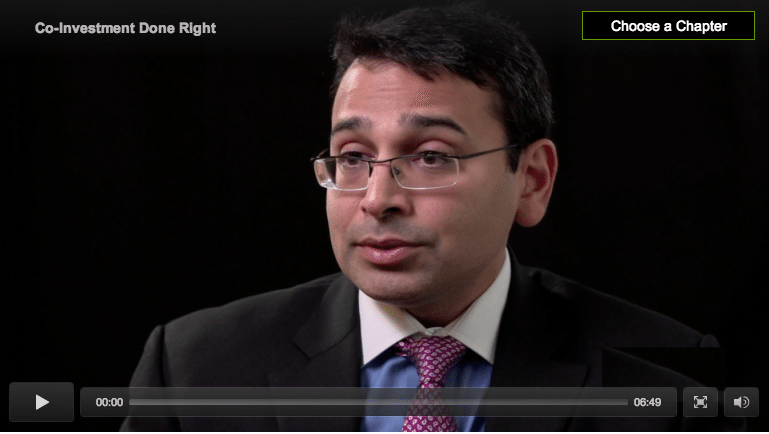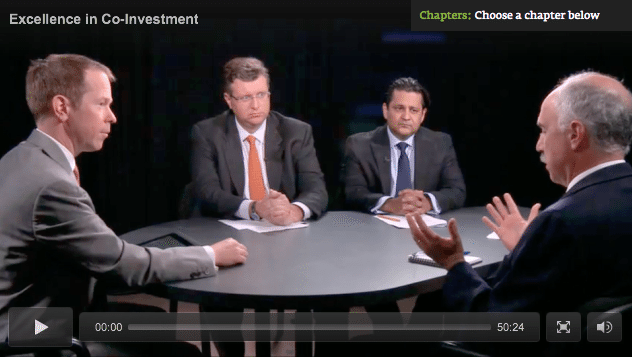Caspian’s Dedication to Co-investment
There has been a large appetite for co-investment in the past year, says Nitin Gupta of Caspian Private Equity. He walks through the workings of a dedicated co-investment fund, the belief in investment diversification, and why outreach is key for deal flow.
You have been directed to a third party website. Although Natixis Global Asset Management believes the information regarding our affiliate on this site to be reliable, it does not guarantee the accuracy, adequacy, or completeness of such information.
Transcript Download Transcript
Caspian’s Dedication to Co-investment
With Nitin Gupta of Caspian Private Equity
David Snow, Privcap:
Today, we’re joined by Nitin Gupta of Caspian Private Equity. Nitin, welcome to Privcap. Thanks for being here.
Nitin Gupta, Caspian Private Equity:
Thank you, David.
Snow: Among its many activities, Caspian Private Equity is a major co-investor. You use third-party capital and you place it directly into private equity deals alongside GP sponsors. I’d love to hear more about this and how you’ve structured your program. First, since you have been co-investing for a few years now, could you talk about whether you see evidence that momentum is growing for LPs to invest increasingly as co-investors?
Gupta: From our standpoint, there has definitely been a big appetite for co-investments over the last 12 to 18 months, particularly. Many LPs are now asking the GPs actually to put the language within their side letters or in the LPs to allow them to syndicate out co-investments to the LP base rather than going outside the LP base. It’s a great way for LPs to get exposure on the direct side on a no-fee, no-carry basis as well. There’s strong demand for it.
We’re seeing more and more. Many estate guys as well as different fund of funds have been very active on the co-investment front.
Snow: Talk a bit about how your business has been built, how you think about building up a portfolio of co-investments and how that might be different from a portfolio of fund commitments.
Gupta: On the co-investment side, there are a couple of ways to look at this. First, in terms of the institution that’s making the co-investment, what is their investment objective? Some institutions say they’re more risk-adverse and are more focused on current income. If they are, then they most likely would build a portfolio of mezzanine co-investments.
Snow: You mean co-investments in debt instruments.
Gupta: That’s right. Other LPs might be more comfortable with the risk-return profile, the story of the equity, and they say, “We only want to invest in equity of these transactions while others do a combination of both.” It depends on the institution’s objectives.
Second, how are they building the portfolio? Are they looking at it as an alpha driver for their fund of funds, which is very different from having a dedicated effort for doing co-investments? At Caspian, for instance, we have a dedicated effort just to do co-investment; it’s focused on lower and middle-market investments.
When we look at these investments, the key objective is to lower the risk profile of a direct investment, but at the same time, to focus on the returns but lower the risk profile early through mechanism of diversification. We are strong believers in diversification, both in terms of number of investments as well as the end markets we focus on.
For example, in our first fund, we had 23 investments and these were spread out across consumer products, healthcare, business services, manufacturing, and all different end markets.
Snow: If you had a large position in an energy fund or an oil-and-gas fund and you’re shown an attractive oil-and-gas opportunity, you might hesitate to invest directly in that opportunity because you would have so much of your portfolio involved in that specific sector?
Gupta: It’s different for us, because we have a dedicated co-investment fund. Those are completely separate entities. However, we might have done, let’s say, three or four consumer deals. We might see another great consumer deal with a great GP that we like. However, by adding that, the portfolio is heavily skewed toward consumer or to that particular macro factor, which is what we would like to avoid even though it might be a great deal. The risk management is a big focus for our fund.
Snow: If your co-investment vehicle is separate from your fund-of-funds vehicle, how do you generate deal flow for your co-investment vehicle? My impression is that, in many cases, deal flow comes from GP with whom you already have a relationship and they’re happier to invite you into a co-investment situation because they’ve already structured a limited partnership relationship with you.
Gupta: Right. In this particular instance, some of the investor groups overlap between the fund-of-fund side and the co-investment fund we have. There is an overlap there. But it all goes through the Caspian entity. So, it is essentially the same investor base making the LP fund investment, but it’s a separate dedicated fund.
Snow: In general, how have you built up your deal flow? Is it a proactive effort? Are you knocking on a lot of doors or is it more responsive to incoming opportunities?
Gupta: It’s a very big focus for us to generate more deal flow. All of our senior team at Caspian have a strong network of relationships in the private equity community that’s been built over many years. I’ve been on the deal side now for 18 years, solely focused on the transaction aspect. Similarly, our other team members have been in the space for a long time. We actively generate deal flow through our relationships but, more importantly, we have a very large fund-of-funds effort that’s been in place for the past nine years and we have relationships across 80 different U.S. private equity funds. That really drives a lot of deal flow for us as well.
Snow: How often is it that an opportunity to co-invest is the result of an outreach, a fortuitous outreach, and how often is it the result of a GP sending around a note saying, “I need co-investment dollars; who’s interested?”
Gupta: A significant majority of the time, it’s all based on outreach. You have to be constantly in touch with these GPs, see what they’re working on and to pursue these deals with them across the board. Obviously, they will send out letters, but you want to be in front of it simply because you want to have additional time to diligence these opportunities rather than have a short window to look at them.
Snow: That would argue that—for an LP who wants to be co-investor, who thinks that sufficient opportunities will simply flow their way—that might not necessarily be the case or it might not be sufficient to build a quality program.
Gupta: Absolutely. It has to be a very outreach-driven effort. But, as I mentioned, some GPs say, “OK, we’ll send it out to all of our LPs in terms of seeing who’s interested or not in allocated pro rata.” That’s great. However, by the time you actually get the investment time, you have to make a decision and there might be a very short window for you to get your arms around it versus if you have a proactive effort, you know well in advance what they’re working on. You can get additional information and see whether it even fits your strategy overall.
Snow: I’m sure you put an opportunity through many screens, but what are some of the first big, important screens? Would it be the diversification question or are there other things you look at that can allow you to give a quick “yes” or “no”?
Gupta: The first big thing is, “Do you have a good relationship with the GP?” Because we’re a minority investor in these deals, we want to make sure we have a very strong relationship with the sponsoring GP that controls the transaction. So, that’s first.
Second, what is the track record of the lead GP doing this deal? In conjunction with the first point, it revolves around because you’re a minority investor and you have to be very comfortable with the lead investor that’s making this control investment. Then, we focus on whether it even fits our strategy. Does it fit our strategy in terms of diversification, to your point, or in terms of focusing on the lower middle market?
Are there key glaring regulatory concerns in this that we will never get comfortable with as our firm? Based on the outcome of those, we really dig into the next level of diligence.
Snow: You made an interesting point about feeling comfortable with the GP. Obviously, as co-investors, people need to take independent views on the quality of the opportunity and that’s why they’re doing their own due diligence. But, ultimately, they also need to take comfort from the fact that this is an opportunity brought to them by a qualified, reputable, battle-hardened GP. That should not be discounted, right?
Gupta: No, absolutely. At the same time, the GPs obviously will give you all the information on the co-invest, but the key thing to remember is that they also have their sales hat on because they are trying to raise additional capital. So, when we look at the diligence, it might be a great GP that we like a lot, but we have to do our homework before we make a decision on whether it makes sense for us.
Snow: For LPs thinking about doing their co-investment platform or hiring someone like Caspian to help them, what are some of the most time-consuming or energy-consuming aspects of being a successful co-investor? What do you spend most of your time on?
Gupta: The biggest thing is getting comfortable with the deal. The lead GPs have spent months getting comfortable on this deal, figuring out the risk-and-return profile, and they’ve been very comfortable as a partnership to make that investment. For us, that window to make a decision is much shorter, so we need to get up to speed on these industries or on this company fairly quickly to make a decision, versus prolonging the entire process. That is the big bulk—can you get your arms around an investment based on the information you have?
Then, it’s getting comfortable on the legal side, where as a minority investor, are you comfortable with the legal rights you have in the documents?
Snow: Caspian has both a fund-of-funds platform as you invest in private equity funds and a co-investment platform, where you’re investing directly into deals. The kind of due diligence you perform on the fund side is assessing the track records of the GPs who will be making investment decisions your behalf. On the direct side, it’s a very different kind of due diligence. Can you walk us through the difference in the due diligence between those two platforms and why it’s important for LPs to understand that?
Gupta: Having a fund-of-funds platform is key to the co-investment effort, particularly because it allows you to meet all different types of GPs in a particular industry. We typically know a number of different funds that might have focus on the same sector, the same space, so you can always make a decision as to which GPs you like in that particular sector.
Having been able to do the co-investment side gives you better access in terms of how they actually do the diligence and how good they are, in terms of the analysis they do prior to making an investment. The two efforts go hand in hand in terms of making a decision on whether we want to invest in this GP or not, because you have access to the way they’ve done their diligence on deals, live access. When you’re making the co-investment at the same time, you know their track record really well. To your point, you’ve done a lot of analysis from the fund side to figure out whether this is a right partner for us in terms of making a fund investment. The two actually do go hand in hand very well.



